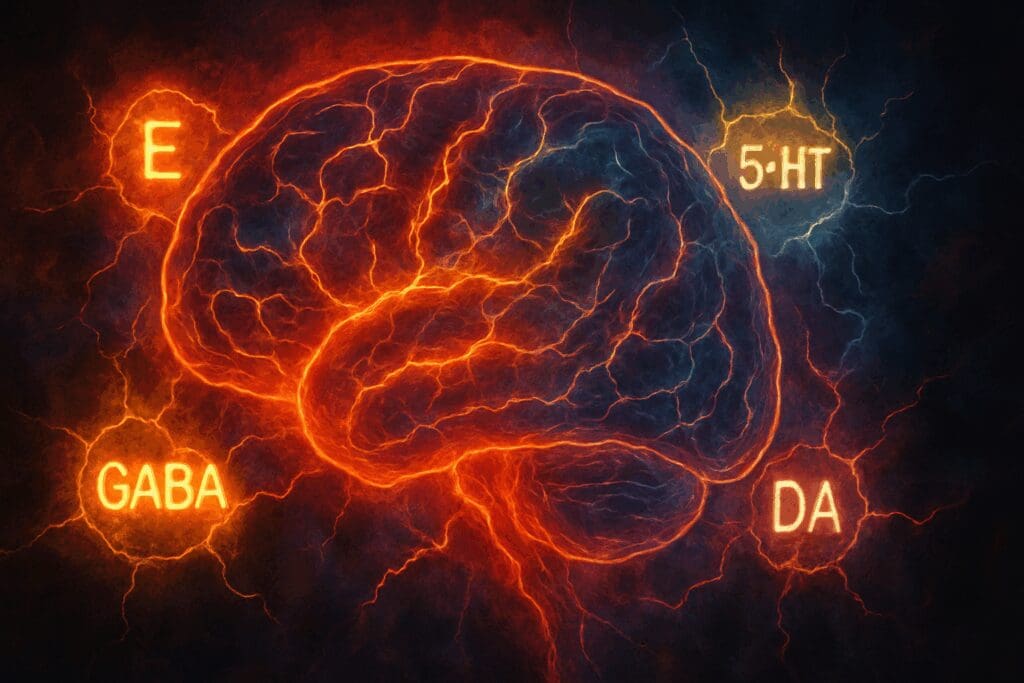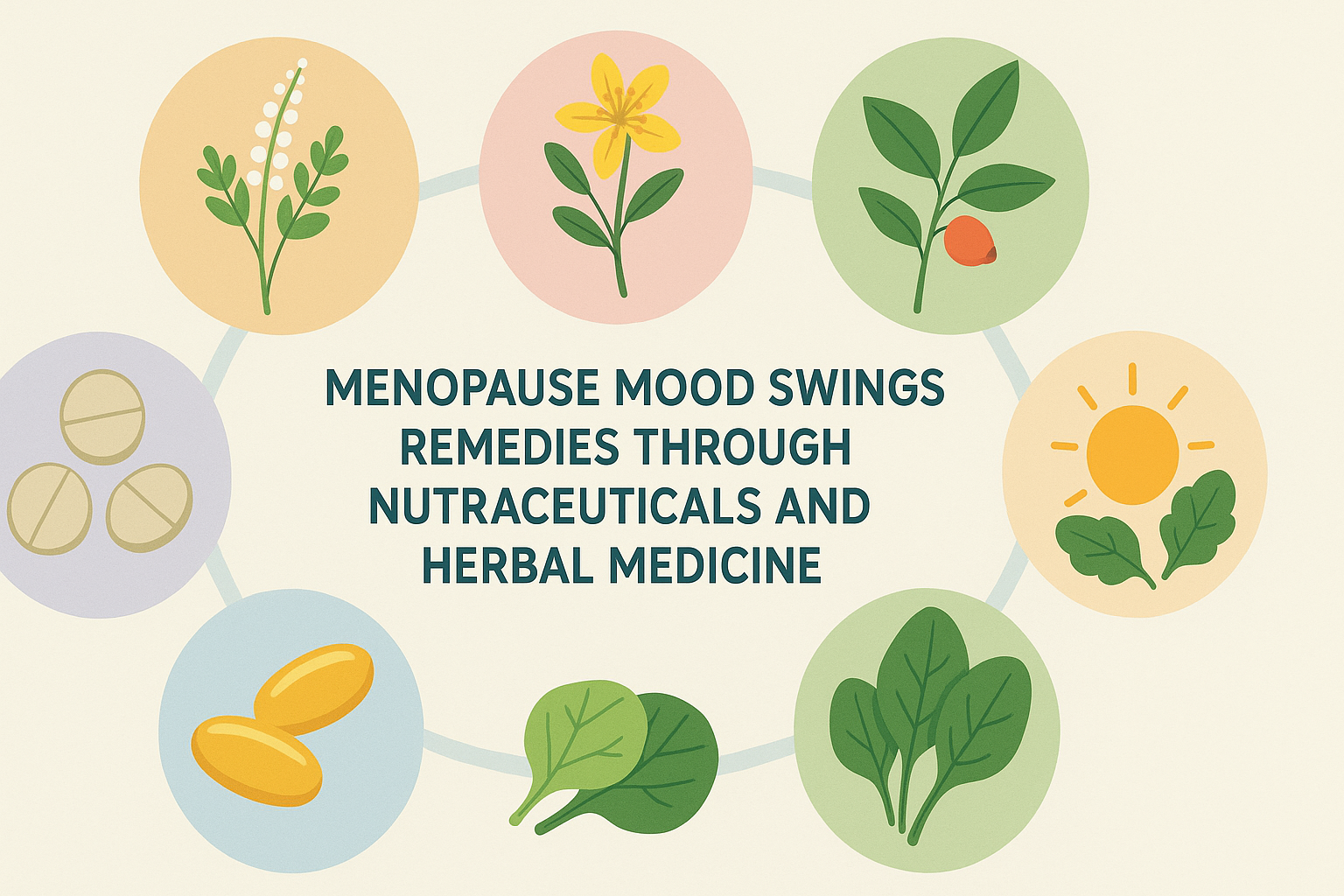Understanding the Emotional Landscape of Menopause
Menopause marks a transformative period in a woman’s life, ushering in profound physiological and emotional shifts that can challenge even the most resilient individuals. One of the most common and distressing concerns reported during this transition is the destabilization of emotional equilibrium—hence the rising interest in effective menopause mood swings treatment. As the ovaries gradually reduce the production of key hormones such as estrogen and progesterone, the resulting hormonal fluctuations can disrupt neurotransmitter activity in the brain, leading to sudden irritability, sadness, anxiety, or emotional detachment. These mood swings often occur unpredictably, interfering with daily functioning and interpersonal relationships, making the quest for lasting emotional balance more than a wellness trend—it’s a medical and psychological imperative.
To appreciate why some women feel emotionally overwhelmed during menopause, it’s important to understand how hormones interact with brain chemistry. Estrogen, for example, plays a significant role in regulating serotonin, a neurotransmitter known for its mood-stabilizing effects. A drop in estrogen can result in diminished serotonin levels, creating a biochemical environment that predisposes women to emotional volatility. Moreover, the experience of menopause coincides with other life transitions—children leaving home, aging parents, shifting careers—which may further intensify psychological stress. These factors combine to create a perfect storm, compelling many to seek reliable menopause mood swings relief that is not only safe but also sustainable.
The emotional toll of menopause extends beyond transient sadness or fleeting anger. For some, the changes resemble symptoms of major depressive disorder or generalized anxiety disorder, with clinical features such as chronic insomnia, loss of interest in pleasurable activities, and persistent fatigue. Recognizing these changes not merely as emotional quirks but as manifestations of a hormonally-driven transformation is crucial. It destigmatizes the experience and opens the door to tailored, evidence-based menopause mood swings remedies that acknowledge the unique neurobiological and psychosocial needs of midlife women. By bridging medical science with mental wellness strategies, women can reclaim their emotional stability and thrive during this pivotal stage of life.
You may also like: The Essential Guide to Choosing the Right Diet for Menopause: What Every Woman Should Know

The Science Behind Menopause Mood Swings: A Hormonal Symphony in Disarray
Understanding the physiological roots of mood swings during menopause requires an appreciation of the body’s finely tuned hormonal network. Estrogen and progesterone, the primary reproductive hormones in women, do more than regulate menstrual cycles—they also influence neural circuits related to emotion, memory, and stress resilience. During perimenopause and menopause, fluctuations in these hormones disturb the homeostasis of neurotransmitters such as serotonin, dopamine, and gamma-aminobutyric acid (GABA). These chemical messengers are instrumental in stabilizing mood, and when their regulation is compromised, emotional instability often follows.
The decline in estrogen is particularly disruptive because of its intricate relationship with serotonin, often dubbed the “feel-good” neurotransmitter. Estrogen boosts serotonin synthesis, enhances its receptor sensitivity, and modulates the reuptake process, allowing for sustained mood elevation. When estrogen levels plummet, serotonin activity diminishes correspondingly, giving rise to symptoms such as anxiety, sadness, and irritability. Progesterone, meanwhile, affects GABA pathways, which help calm the brain and promote sleep. Its reduction may lead to increased restlessness and poor emotional regulation, exacerbating the distress of menopause-related mood changes.
Beyond the neurochemical shifts, structural brain changes have also been observed in imaging studies of menopausal women. Regions such as the prefrontal cortex and amygdala—which govern emotional processing and regulation—show alterations in activity patterns in response to hormonal fluctuations. These neural adaptations help explain why even women without a history of mood disorders may experience heightened emotional sensitivity or dysphoria during menopause. Understanding these changes empowers women and their healthcare providers to explore menopause mood swings treatment strategies grounded in biological reality rather than outdated assumptions or dismissive attitudes.
Emerging research in neuroendocrinology suggests that the menopausal brain is not in decline but in transition. This reframing invites a more compassionate and constructive approach to mental health during midlife. Rather than pathologizing emotional responses, clinicians can support women by aligning treatment plans with the brain’s evolving hormonal environment. This scientific perspective is essential not only for destigmatizing menopause mood swings relief efforts but also for validating the lived experiences of countless women navigating this complex terrain. With the right insights and tools, emotional resilience during menopause is not only possible—it is fully achievable.

Proven Menopause Mood Swings Treatment: Integrative Approaches That Make a Difference
When exploring menopause mood swings treatment options, it is essential to recognize that effective care must be multidimensional. Addressing mood disturbances requires more than a one-size-fits-all solution; it demands a blend of medical intervention, lifestyle adjustments, and psychological support tailored to individual needs. For many women, hormone replacement therapy (HRT) serves as a cornerstone of treatment. By reintroducing controlled amounts of estrogen and sometimes progesterone, HRT can restore neurochemical balance and significantly reduce emotional volatility. Numerous clinical trials have shown HRT to be effective in alleviating both vasomotor symptoms and mood fluctuations, particularly when started during the early stages of menopause.
However, not all women are suitable candidates for HRT, especially those with a history of hormone-sensitive cancers, clotting disorders, or cardiovascular disease. For these individuals, non-hormonal pharmacological options offer meaningful menopause mood swings relief. Selective serotonin reuptake inhibitors (SSRIs), such as fluoxetine and sertraline, have been shown to improve mood by enhancing serotonin levels, while also reducing hot flashes—a common menopausal symptom that can exacerbate emotional stress. Serotonin-norepinephrine reuptake inhibitors (SNRIs) like venlafaxine have similarly demonstrated efficacy in improving emotional well-being. These medications are often prescribed at lower doses than those used for clinical depression, thereby minimizing side effects while delivering therapeutic benefits.
In addition to pharmacological therapies, many women find that incorporating cognitive behavioral therapy (CBT) into their treatment regimen yields lasting improvements. CBT helps individuals recognize and reframe negative thought patterns that contribute to emotional dysregulation. It also provides practical tools for managing stress, sleep disturbances, and interpersonal conflicts—all of which can intensify mood swings if left unaddressed. Mindfulness-based stress reduction (MBSR) and acceptance and commitment therapy (ACT) are also gaining traction as holistic methods for improving emotional balance during menopause. These practices emphasize present-moment awareness, self-compassion, and value-driven living, aligning well with the needs of women experiencing identity shifts during this life stage.
Crucially, any effective menopause mood swings remedies must be guided by a thorough clinical assessment. What works for one woman may be ineffective or even counterproductive for another. This is why a personalized approach, grounded in medical history, lifestyle factors, and psychological readiness, is essential. By embracing an integrative strategy that includes both conventional and complementary modalities, women can construct a menopause mood swings treatment plan that not only addresses symptoms but also enhances overall quality of life.

Lifestyle Interventions for Coping with Menopause Emotionally and Physically
Lifestyle changes often serve as the first line of defense in coping with menopause, and their value cannot be overstated. While medications and therapy are critical for some, many women can experience profound emotional benefits simply by reconfiguring their daily routines. Regular physical activity, for instance, is a powerful natural antidepressant. Engaging in aerobic exercise such as walking, swimming, or dancing stimulates the release of endorphins and promotes the regulation of cortisol, the body’s primary stress hormone. These physiological shifts contribute to a more stable mood and can buffer against the emotional swings associated with fluctuating hormones.
Nutrition also plays a significant role in menopause mood swings relief. A diet rich in omega-3 fatty acids, antioxidants, and phytoestrogens has been linked to better emotional health. Foods like flaxseeds, soy, fatty fish, and leafy greens can help modulate estrogen levels and reduce inflammation, which may indirectly influence mood. Meanwhile, minimizing intake of sugar, alcohol, and processed foods can prevent blood sugar imbalances and gut dysbiosis—both of which are increasingly recognized as contributors to mood disturbances. Adequate hydration and mindful eating habits further support overall emotional regulation, offering subtle yet impactful menopause mood swings remedies that enhance both physical and mental well-being.
Sleep, often disrupted during menopause due to night sweats or anxiety, is another critical lifestyle factor. Chronic sleep deprivation exacerbates irritability, reduces stress tolerance, and impairs decision-making. Prioritizing sleep hygiene by establishing consistent bedtimes, creating a calming nighttime routine, and limiting screen exposure can significantly improve emotional resilience. Some women benefit from herbal supplements like valerian root or melatonin to ease into restful sleep, although these should be used under medical supervision to avoid interactions with other treatments. Quality sleep restores the brain’s capacity to regulate emotions and contributes to hormonal equilibrium, underscoring its central role in coping with menopause on both a physical and psychological level.
Social support and emotional connection also deserve emphasis. Women who cultivate strong social networks—whether through friendships, support groups, or community involvement—report fewer mood disturbances during menopause. These connections provide a buffer against stress and offer validation during a period often characterized by internal change and external misunderstanding. Sharing experiences with others who are navigating similar transitions fosters a sense of solidarity and empowerment, transforming menopause from an isolating ordeal into a communal journey. By integrating lifestyle interventions with self-awareness and intentionality, women can achieve menopause mood swings relief that is both effective and empowering.

Psychospiritual Approaches to Emotional Equilibrium
Beyond the realm of physical health and medical treatment lies the psychospiritual domain, a facet of well-being that becomes especially poignant during menopause. For many women, this transition evokes a re-examination of identity, purpose, and spiritual orientation. Embracing psychospiritual practices such as meditation, journaling, and energy healing can serve as powerful menopause mood swings remedies by anchoring the self in a deeper sense of meaning and coherence. These practices do not replace medical interventions but rather complement them, enriching emotional resilience through inner alignment and self-discovery.
Meditation, particularly mindfulness and loving-kindness meditation, has been shown to reduce symptoms of anxiety and depression in menopausal women. By cultivating awareness of the present moment without judgment, meditation helps women detach from reactive emotional patterns and instead observe their inner experiences with clarity and compassion. This shift in perspective can be profoundly healing, especially for those grappling with intense mood swings or existential uncertainty. Meditation also enhances prefrontal cortex activity, which is associated with better emotional regulation, improved attention, and reduced fear responses—a neurocognitive advantage that supports long-term emotional balance.
Journaling provides another avenue for psychospiritual exploration. Writing about one’s thoughts, feelings, and physical symptoms allows for emotional processing and pattern recognition. It offers a private space for releasing pent-up frustration, tracking progress, and affirming personal strengths. Some women find that expressive writing helps uncover underlying beliefs or unresolved grief that may be contributing to mood instability. Incorporating gratitude journaling—writing daily reflections on moments of appreciation—can further shift focus away from distress and toward a mindset of resilience and possibility, both critical for coping with menopause in an empowered way.
Spiritual counseling and energy-based modalities such as Reiki, acupuncture, or chakra balancing are also embraced by women seeking holistic menopause mood swings treatment. While the scientific basis for some of these methods is still being explored, many women report subjective benefits, including increased emotional clarity, physical relaxation, and a greater sense of connection to self and others. These practices tap into the intangible dimensions of healing, reinforcing the idea that emotional wellness during menopause is not merely a biochemical issue, but a whole-person journey. By addressing the soul’s yearnings alongside the body’s needs, psychospiritual approaches offer a unique and deeply personal path to menopause mood swings relief.

Menopause Mood Swings Remedies Through Nutraceuticals and Herbal Medicine
For those seeking alternatives to traditional pharmaceuticals, the use of nutraceuticals and herbal medicine has become an increasingly popular and evidence-supported avenue for menopause mood swings treatment. While these interventions should always be pursued under the guidance of a qualified healthcare professional, many natural compounds have shown promise in helping women regain emotional balance during this complex life stage. The appeal of these remedies lies not only in their potential efficacy but also in their ability to support overall wellness without the systemic effects associated with hormone replacement therapy or antidepressants.
One of the most extensively studied natural compounds for menopausal mood relief is black cohosh. Derived from the root of a North American plant, black cohosh has demonstrated modest benefits in reducing hot flashes and improving mood, likely due to its phytoestrogenic activity and influence on serotonin pathways. While its mechanism is not fully understood, many women report a noticeable decrease in irritability and depressive symptoms with consistent use. Other botanicals such as St. John’s Wort and chasteberry have also been explored for their mood-regulating effects. St. John’s Wort, in particular, has long been used to treat mild to moderate depression and may serve as a gentle alternative for menopause mood swings relief, although it can interact with many medications.
Adaptogenic herbs like ashwagandha, rhodiola, and holy basil offer another compelling approach. These plants help regulate the hypothalamic-pituitary-adrenal (HPA) axis, the body’s central stress response system. By modulating cortisol levels and enhancing the body’s ability to adapt to stress, adaptogens support emotional resilience and cognitive clarity—qualities often challenged during menopause. Ashwagandha has been shown to improve sleep quality, reduce anxiety, and support thyroid function, all of which can indirectly stabilize mood. Rhodiola, on the other hand, is known for its energizing properties and has been linked to reduced fatigue and improved mood in clinical trials.
Beyond herbs, certain vitamins and nutrients play a vital role in neurotransmitter synthesis and hormonal balance. B-complex vitamins, particularly B6, B9 (folate), and B12, are essential for the production of serotonin and dopamine. A deficiency in these nutrients can exacerbate feelings of depression or anxiety. Similarly, vitamin D, often referred to as the “sunshine vitamin,” is involved in hormonal regulation and mood stabilization. Low vitamin D levels have been correlated with increased rates of depressive symptoms in menopausal women, making supplementation a potentially effective component of menopause mood swings remedies. Omega-3 fatty acids, especially EPA and DHA found in fish oil, are another critical nutrient for emotional health, with substantial research supporting their antidepressant and anxiolytic effects.
The realm of nutraceuticals offers an empowering dimension to coping with menopause, allowing women to take an active role in their own care while working in harmony with nature. While not a substitute for clinical therapy in more severe cases, these remedies can serve as foundational support or adjunctive treatment. It is important, however, that women consult with integrative medicine practitioners to ensure proper dosage, safety, and synergy with other treatments. When thoughtfully applied, nutraceuticals and herbal medicines can offer gentle yet powerful menopause mood swings relief that respects the body’s rhythms while supporting long-term emotional wellness.
Reframing Menopause as a Developmental Milestone, Not a Decline
One of the most profound shifts in managing menopause mood swings comes not from medicine or therapy, but from mindset. For too long, menopause has been framed culturally as a sign of decline, loss, or invisibility. This negative framing can exacerbate psychological distress and prevent women from accessing the inner growth and empowerment that this phase can offer. By instead viewing menopause as a developmental milestone—an opportunity for transformation, clarity, and renewed purpose—women can foster an internal environment that supports healing and emotional balance from within.
Psychological theories of adult development, such as those proposed by Erik Erikson and Carl Jung, suggest that midlife is a time of individuation—a journey inward that integrates wisdom, self-acceptance, and spiritual maturity. Menopause aligns with this phase, acting as a symbolic threshold into a new stage of life where external roles may begin to fade, but internal roles deepen. The hormonal changes, far from being merely disruptive, can be seen as catalysts for introspection and reevaluation. Many women report feeling more assertive, discerning, or emotionally honest post-menopause—qualities that may emerge naturally once the reproductive phase ends and the body redirects its energy toward self-actualization.
This reframing has practical implications for menopause mood swings treatment. If emotional volatility is interpreted as a form of “emotional detox”—the shedding of outdated roles, repressed feelings, or limiting beliefs—then the focus shifts from symptom suppression to emotional integration. Journaling, talk therapy, and creative expression become powerful tools not only for mood regulation but for meaning-making. Women who engage in storytelling, artistic endeavors, or mentorship during this period often report an enhanced sense of identity and well-being, despite physical discomforts.
Cultural narratives also shape how women experience menopause. In societies where aging is revered and elder women are seen as wisdom keepers, the transition is often smoother, both emotionally and physically. In contrast, in cultures obsessed with youth and productivity, menopause may feel like an exile from relevance. Changing this narrative—within oneself, within families, and within media—is a vital part of any comprehensive menopause mood swings remedy. When women are encouraged to honor rather than fear this passage, they unlock emotional strength that goes far beyond any pharmaceutical or supplement.
Ultimately, reframing menopause is not about denying its difficulties but about placing those difficulties in a larger, more affirming context. By recognizing this period as a unique developmental chapter with its own gifts and challenges, women are empowered to approach menopause mood swings treatment not from a place of defeat, but from a place of intentional evolution. This shift in consciousness alone can create profound emotional equilibrium, making the journey not only bearable but transformative.

Navigating Relationships During Emotional Upheaval
One of the often-overlooked consequences of menopause-related emotional shifts is the strain they can place on interpersonal relationships. Whether with a spouse, children, friends, or coworkers, mood swings can introduce confusion, miscommunication, and conflict that ripple outward into a woman’s social world. Coping with menopause in this context requires not only self-awareness but also strategies for fostering understanding and resilience within relationships.
Communication is the bedrock of any healthy relationship, and this becomes even more crucial during periods of emotional fluctuation. Women experiencing menopause mood swings may struggle to articulate their feelings clearly, or they may fear being dismissed as “overreacting” or “hormonal.” Open, honest, and proactive dialogue with loved ones can dismantle these misconceptions. Explaining that mood changes are rooted in neurochemical fluctuations rather than personal failings can generate empathy and support. Partners and family members who understand the biological basis of menopause mood swings are more likely to respond with patience and compassion rather than defensiveness.
Boundaries also play a critical role. Women navigating menopause need space to process their emotions without being pulled into unnecessary obligations or guilt-laden expectations. Setting limits around time, energy, and emotional labor can prevent burnout and preserve emotional equilibrium. This may mean saying no to social engagements, adjusting household responsibilities, or carving out sacred time for rest and reflection. Boundaries are not walls; they are bridges to healthier, more sustainable relationships.
Couples counseling and family therapy can be invaluable tools in mitigating relationship strain. These spaces provide a neutral setting for discussing emotional challenges and identifying collaborative solutions. A skilled therapist can help couples recognize maladaptive patterns that may be exacerbated by menopausal changes and guide them toward more supportive interactions. Moreover, relationship-based interventions are not solely reactive; they can be proactive measures that fortify emotional bonds and enhance mutual understanding during this life transition.
It’s also important to nurture friendships and peer connections. Many women find solace and validation in talking to other women going through the same experiences. Whether through formal support groups, online forums, or informal gatherings, these connections serve as lifelines, reminding women that they are not alone. Coping with menopause becomes infinitely easier when shared, and collective wisdom often yields solutions that might not emerge in isolation. By tending to relationships with intention and clarity, women can turn a potentially turbulent period into one of deepened intimacy and solidarity.
Creating a Long-Term Emotional Wellness Plan Beyond Menopause
Menopause does not end emotional complexity—it simply marks a new phase. As hormone levels stabilize in the postmenopausal years, emotional symptoms often subside, but this does not mean that the need for self-care and emotional awareness disappears. On the contrary, many women find that the postmenopausal phase is an ideal time to invest in long-term emotional wellness strategies that reinforce the gains made during the transition.
One of the most empowering aspects of this period is the sense of psychological freedom that often accompanies the cessation of reproductive responsibilities and societal expectations. Women report feeling more autonomous, creative, and confident in their choices. Harnessing this newfound freedom requires intentionality. Continuing practices such as mindfulness meditation, expressive writing, and physical movement keeps the emotional body agile and responsive. These practices not only prevent the reemergence of mood disturbances but also enhance the depth and richness of everyday life.
Routine mental health checkups can also be beneficial. Just as women are encouraged to maintain annual physicals and screenings, regular consultations with a therapist or counselor can help identify early signs of depression or anxiety and intervene before they escalate. Mental health is not static; it ebbs and flows with circumstances, health status, and aging. A proactive approach ensures that emotional well-being remains a lifelong priority rather than a temporary concern linked only to menopause.
Engaging in creative or spiritual pursuits can also serve as pillars of postmenopausal emotional health. Whether it’s painting, volunteering, gardening, or spiritual study, these activities activate different areas of the brain and foster a sense of meaning and purpose. Many women also choose to mentor younger generations, sharing the wisdom and strength cultivated during their menopausal journey. This form of generativity, a term coined by psychologist Erik Erikson, is associated with increased life satisfaction and emotional stability.
Ultimately, the goal of menopause mood swings treatment is not simply to eliminate discomfort but to lay the foundation for a vibrant, emotionally fulfilling life that continues well into the later decades. When emotional wellness is approached as a dynamic, evolving process, it becomes a source of empowerment rather than a reactive strategy. Postmenopause, far from being a denouement, can be a crescendo of self-awareness, creativity, and joy. By crafting a long-term emotional wellness plan rooted in resilience, women can thrive well beyond hormonal change and into the fullness of life.
Frequently Asked Questions About Managing Menopausal Emotional Changes: Expert Insights and Emerging Solutions
1. How can personalized therapy plans enhance menopause mood swings treatment outcomes?
Personalized therapy plans for menopause mood swings treatment go beyond conventional hormone therapy by incorporating psychological assessments, lifestyle audits, and individualized risk factors. A therapist or menopause specialist might recommend cognitive behavioral therapy (CBT) to manage emotional reactivity, especially for women with pre-existing anxiety or depression. Tailored approaches can also integrate mindfulness practices, structured sleep hygiene, and even creative outlets like journaling or art therapy. These interventions empower women to regain control and foster emotional resilience during transitional hormonal shifts. Unlike generic treatments, a customized strategy can evolve with the patient’s changing symptoms, making it one of the most effective tools for sustainable menopause mood swings relief.
2. Can wearable technology help with coping with menopause mood swings?
Yes, wearable technology is emerging as a novel aid in coping with menopause, particularly when it comes to monitoring mood swings and related symptoms. Devices like smartwatches and biometric rings can track sleep patterns, body temperature, heart rate variability, and stress indicators—factors that often fluctuate during perimenopause. Data from these wearables can be shared with healthcare providers to fine-tune menopause mood swings treatment protocols. Some apps even allow for journaling emotional states and triggering factors in real time, helping identify patterns that might otherwise go unnoticed. As digital health advances, wearables are becoming a valuable companion in both tracking and managing menopause mood swings remedies.
3. How does social support influence long-term menopause mood swings relief?
Social support plays a critical yet often underexplored role in achieving long-term menopause mood swings relief. Women who are part of peer support groups or engage regularly with empathetic friends and family tend to report better emotional regulation. Shared experiences reduce feelings of isolation, normalize symptoms, and encourage the consistent practice of coping strategies. Additionally, social bonds can motivate adherence to treatment plans, whether medical or holistic. In fact, community-driven support can be as impactful as pharmacological interventions when incorporated into a well-rounded menopause mood swings treatment strategy.
4. What role does nutritional psychiatry play in menopause mood swings remedies?
Nutritional psychiatry, an emerging field linking diet and mental health, is gaining relevance in the conversation around menopause mood swings remedies. Omega-3 fatty acids, magnesium, vitamin D, and phytoestrogens found in flaxseeds and soy have shown mood-stabilizing effects in menopausal populations. Certain foods also modulate neurotransmitters like serotonin and dopamine, which are crucial in regulating mood. By targeting the gut-brain axis, a tailored nutritional plan can reduce inflammation and improve emotional stability. This dietary approach is particularly beneficial for women seeking non-hormonal menopause mood swings treatment options.
5. Are there any underutilized techniques for coping with menopause that deserve more attention?
Absolutely. While cognitive therapies and medication are commonly discussed, techniques like somatic experiencing, aromatherapy, and biofeedback are underutilized yet effective for coping with menopause. Somatic therapy focuses on bodily awareness to discharge stored emotional tension, which can be transformative during mood swings. Biofeedback devices help users gain control over stress responses by teaching them how to regulate breathing and heart rate. Additionally, aromatherapy with essential oils like clary sage or lavender has calming effects, supporting menopause mood swings relief without the need for medication. These therapies are ideal complements to more conventional treatments.
6. How does sleep architecture disruption impact menopause mood swings treatment success?
Sleep disturbances are a significant barrier to effective menopause mood swings treatment, as inadequate or fragmented rest directly impairs emotional regulation. During menopause, fluctuations in estrogen and progesterone can lead to lighter sleep stages, increased wakefulness, and even sleep apnea. This degradation in sleep architecture exacerbates irritability, anxiety, and cognitive fog. For comprehensive menopause mood swings relief, treatment plans should include targeted sleep interventions like CBT-I (Cognitive Behavioral Therapy for Insomnia), melatonin regulation, and nighttime environment optimization. Addressing sleep quality is not merely supportive—it is foundational to the success of any emotional treatment strategy.
7. Can environmental design support menopause mood swings remedies in daily life?
Environmental design—how we shape our living and workspaces—can significantly contribute to effective menopause mood swings remedies. Natural lighting, temperature control, access to green spaces, and noise reduction all influence cortisol levels and circadian rhythms. A calm, organized home environment with designated self-care areas encourages consistency in coping with menopause routines such as meditation or yoga. Even aromatherapy diffusers and calming color schemes can subtly shift mood dynamics. By aligning physical space with emotional well-being goals, women can turn their environments into active allies in menopause mood swings treatment.
8. How can intergenerational communication improve emotional support during menopause?
Intergenerational communication can be a powerful, overlooked dimension of coping with menopause. Conversations between menopausal women and their daughters or younger family members foster empathy, reduce shame, and normalize emotional flux. It creates a legacy of openness and education, preparing the next generation to approach menopause with knowledge and resilience. These dialogues can also inspire shared wellness rituals, such as walks, meal planning, or mindfulness sessions. By embedding menopause mood swings relief into the fabric of family communication, the process becomes less isolating and more empowering.
9. What are the long-term mental health implications if menopause mood swings treatment is neglected?
Neglecting menopause mood swings treatment can have profound, lasting impacts on mental health. Chronic mood instability can evolve into clinical depression, generalized anxiety, or even cognitive impairments if left unaddressed. The cumulative effects of untreated emotional volatility also strain relationships, reduce work performance, and erode self-esteem. Over time, this emotional turbulence can become deeply ingrained, making future interventions less effective. Early and consistent application of menopause mood swings remedies not only mitigates immediate discomfort but also safeguards long-term emotional resilience and psychological integrity.
10. Why should menopause mood swings treatment be integrated into workplace wellness programs?
Including menopause mood swings treatment in workplace wellness programs recognizes the unique challenges midlife women face in maintaining professional performance during hormonal transition. Mood swings can affect focus, decision-making, and interpersonal dynamics, all of which influence workplace productivity and satisfaction. Wellness programs that offer counseling, flexible work arrangements, or quiet recovery spaces empower women to manage their symptoms without stigma. Normalizing menopause discussions in corporate settings also fosters inclusivity and retention. As more organizations adopt progressive wellness policies, coping with menopause becomes not just a personal challenge but a shared responsibility within professional culture.
Embracing Wholeness: The Path to True Emotional Freedom
Navigating the emotional tides of menopause is not an easy task, but it is a journey rich with potential for growth, healing, and transformation. By approaching menopause mood swings treatment with a multidimensional mindset—one that encompasses medical science, holistic remedies, lifestyle changes, relational awareness, and spiritual depth—women can reclaim their emotional equilibrium with both strength and grace. The path to emotional balance is not linear or uniform, but it is paved with proven strategies, personalized tools, and a deepening sense of self-trust.
Coping with menopause means more than managing symptoms—it means listening to the body’s wisdom, honoring the psyche’s needs, and opening to new narratives that celebrate rather than fear change. Effective menopause mood swings remedies begin with knowledge, but they culminate in self-empowerment. Whether through HRT, herbal medicine, therapy, or creative reinvention, each woman has the capacity to shape her own menopause journey in ways that reflect her values, experiences, and inner truth.
This transition, while biologically initiated, ultimately invites a redefinition of identity and purpose. When women are supported with empathy, informed by science, and empowered by community, they are more likely to experience menopause not as an end, but as a beginning. The hormonal shifts may challenge stability for a time, but they also crack open the shell of old paradigms, allowing authenticity and resilience to emerge.
Menopause mood swings treatment, then, is not just about symptom management—it’s about cultivating emotional freedom. Through a tapestry of integrative care, mindful living, and relational support, women can navigate this terrain with clarity and confidence. Emotional balance is not a static state, but a dynamic practice—and menopause, far from diminishing a woman’s power, may well be the gateway to her most grounded, radiant self.
Further Reading:
10 ways to even out your menopause mood swings
Mood Changes During Perimenopause Are Real. Here’s What to Know.



